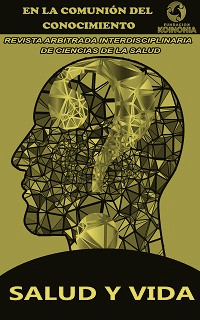Prevalence of musculoskeletal disorders in teachers working under the telework modality
DOI:
https://doi.org/10.35381/s.v.v7i2.3377Keywords:
Musculoskeletal pain, musculoskeletal development, musculoskeletal system, (Source: DeCS)Abstract
Objective: to carry out a screening of musculoskeletal disorders using the Kuorinka Nordic questionnaire in order to know their prevalence in higher education teachers who work under the telework modality. Method: Descriptive observational. Results: The musculoskeletal symptoms of greatest affectation in the 75 teachers who participated in the study were at the level of the neck with 54% followed by the lumbar or dorsal area with 50.6%; to a lesser extent they were detected in the shoulder with 19.5% and finally at the level of the elbow or forearm with 20% detected in the respondents. Conclusion: The discomfort or pain at the neck level followed by the location in the lumbar spine seems to be the most affected in teachers who perform telework and that preventive training on occupational health issues online has not shown great impact in reducing this risk.
Downloads
References
Morales, J. Trastornos musculoesqueléticos y nivel de estrés en trabajadores del servicio de transporte público de Lima [Musculoskeletal disorders and stress level in public transportation workers in Lima]. Rev Asoc Esp Espec Med Trab 2021; 30(1): 9-23.
Becerra-Paredes NY, Timoteo-Espinoza M, Montenegro-Caballero SM. Trastornos musculoesqueléticos en trabajadores de transporte público de vehículos motorizados menores de Lima Norte [Musculoskeletal disorders in public transportation workers of small motorized vehicles in northern Lima]. Health care yamp; global health. 2020;4(2):48-55.
Serrano C. Transformación digital y medicina del trabajo [Digital transformation and occupational medicine]. Sociedad española de medicina del trabajo, 2017;26(4),1-3.
Contreras OE, Rozo Rojas I. Teletrabajo y sostenibilidad empresarial. Una reflexión desde la gerencia del talento humano en Colombia [Telework and business sustainability. A reflection from the management of human talent in Colombia]. Suma de Negocios. 2015;6(13):74-83. https://n9.cl/wx6mp9
Moreland-Russell S, Jabbari J, Ferris D, Roll S. At Home and on the Brink: U.S. Parents' Mental Health during COVID-19. Int J Environ Res Public Health. 2022;19(9):5586. doi:10.3390/ijerph19095586
Kawada T. Telework and Work-Related Well-Being. J Occup Environ Med. 2020;62(12):e775. doi:10.1097/JOM.0000000000002058
Radulović AH, Žaja R, Milošević M, Radulović B, Luketić I, Božić T. Work from home and musculoskeletal pain in telecommunications workers during COVID-19 pandemic: a pilot study. Arh Hig Rada Toksikol. 2021;72(3):232-239. doi:10.2478/aiht-2021-72-3559
Fadel M, Bodin J, Cros F, Descatha A, Roquelaure Y. Teleworking and Musculoskeletal Disorders: A Systematic Review. Int J Environ Res Public Health. 2023;20(6):4973. doi:10.3390/ijerph20064973
Kuorinka I, Jonsson B, Kilbom A, et al. Standardised Nordic questionnaires for the analysis of musculoskeletal symptoms. Appl Ergon. 1987;18(3):233-237. doi:10.1016/0003-6870(87)90010-x
Dos Santos IN, Pernambuco ML, da Silva AMB, Ruela GA, de Oliveira AS. Association between musculoskeletal pain and telework in the context of the COVID 19 pandemic: an integrative review. Rev Bras Med Trab. 2021;19(3):342-350. doi:10.47626/1679-4435-2021-812
Tomasina F, Pisani A. Pros y contras del teletrabajo en la salud física y mental de la población general trabajadora: una revisión narrativa exploratoria [Pros and cons of teleworking in relation to the physical and mental health of the working general population: a narrative exploratory review]. Arch Prev Riesgos Labor. 2022;25(2):147-161. doi:10.12961/aprl.2022.25.02.07
Rodríguez-Nogueira Ó, Leirós-Rodríguez R, Benítez-Andrades JA, Álvarez-Álvarez MJ, Marqués-Sánchez P, Pinto-Carral A. Musculoskeletal Pain and Teleworking in Times of the COVID-19: Analysis of the Impact on the Workers at Two Spanish Universities. Int J Environ Res Public Health. 2020;18(1):31. doi:10.3390/ijerph18010031
Milaković M, Koren H, Bradvica-Kelava K, et al. Telework-related risk factors for musculoskeletal disorders. Front Public Health. 2023;11:1155745. doi:10.3389/fpubh.2023.1155745
Cruz-Ausejo L, Copez-Lonzoy A, Vilela-Estrada AL, Valverde JJ, Bohórquez M, Moscoso-Porras M. Can working at home be a hazard? Ergonomic factors associated with musculoskeletal disorders among teleworkers during the COVID-19 pandemic: a scoping review. Int J Occup Saf Ergon. 2023;29(4):1335-1344. doi:10.1080/10803548.2022.2127246
Du T, Iwakiri K, Sotoyama M, Tokizawa K. Computer and Furniture Affecting Musculoskeletal Problems and Work Performance in Work From Home During COVID-19 Pandemic. J Occup Environ Med. 2022;64(11):964-969. doi:10.1097/JOM.0000000000002622
Published
How to Cite
Issue
Section
License
Copyright (c) 2023 Johan Oswaldo Bautista-Guncay, José Renán Molina-Delgado, Raúl González-Salas, Darwin Raúl Noroña-Salcedo

This work is licensed under a Creative Commons Attribution-NonCommercial-ShareAlike 4.0 International License.
CC BY-NC-SA : Esta licencia permite a los reutilizadores distribuir, remezclar, adaptar y construir sobre el material en cualquier medio o formato solo con fines no comerciales, y solo siempre y cuando se dé la atribución al creador. Si remezcla, adapta o construye sobre el material, debe licenciar el material modificado bajo términos idénticos.
OAI-PMH: https://fundacionkoinonia.com.ve/ojs/index.php/saludyvida/oai.









